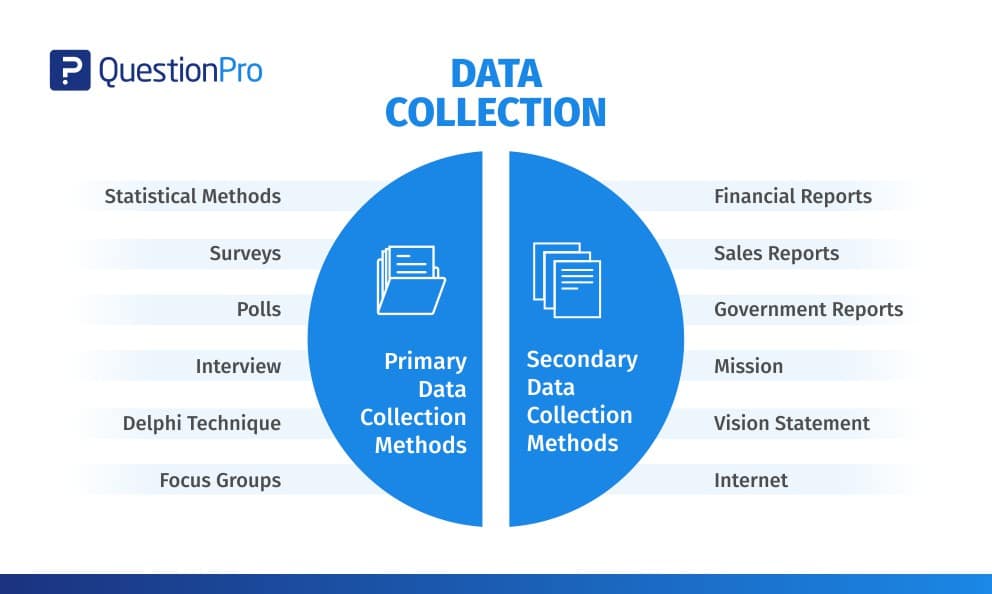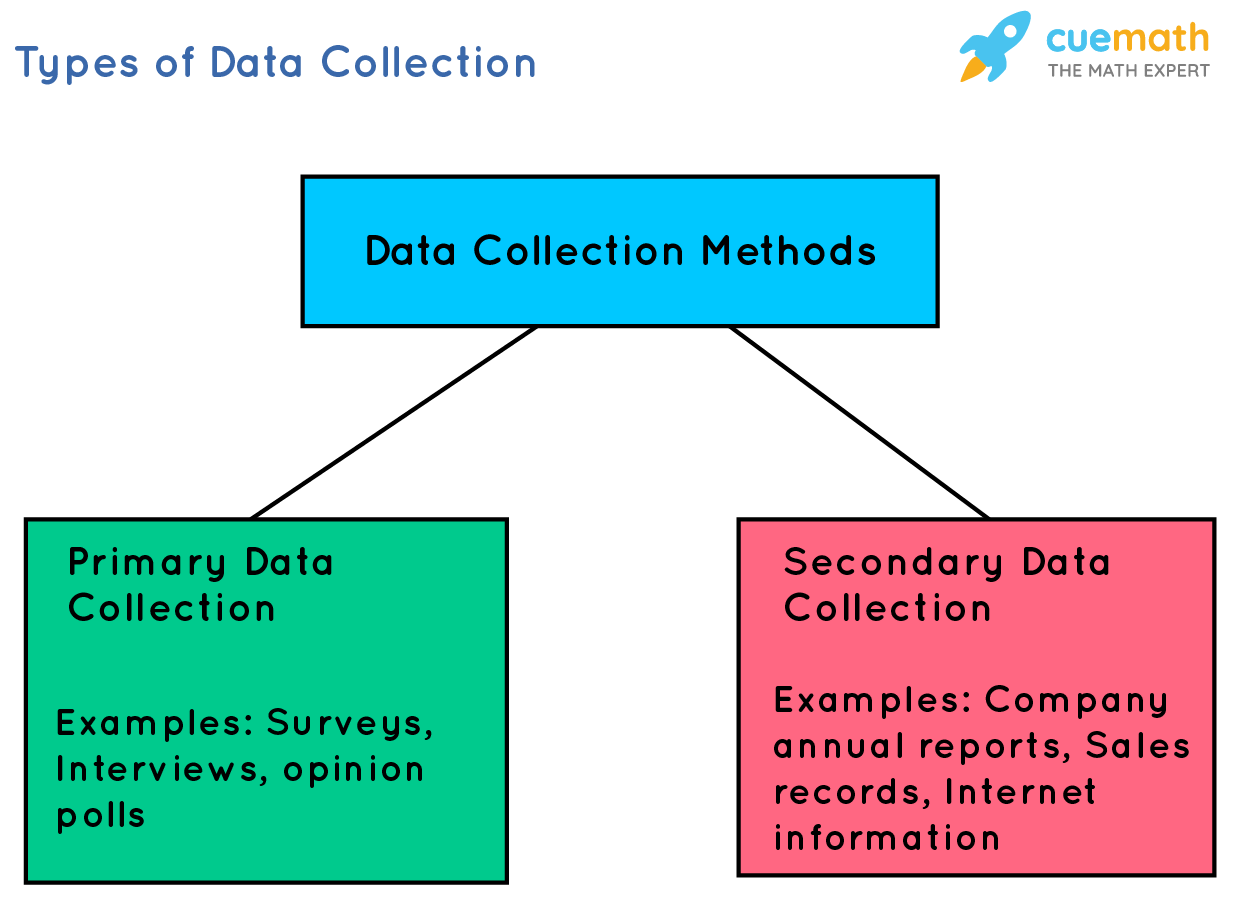Information collection is a pivotal part of research study and analysis. It empowers us to gather accurate information and make informed and tactical choices.
In this post, we will explore the varied techniques for information collection and discuss their applications. These methods are essential for getting the information for analysis, decision-making, and preparation. Each approach is individualized to numerous research study functions and types, and understanding them can equip you to pick the most appropriate one for your requirements. Whether you are carrying out a study, observing regimens, or using existing records, each approach has its special advantages. This blog site will cover the primary data collection strategies, using insights into their applications and effectiveness. Stay tuned to find which method best fits your research study objectives. Smartproxy provides the tools needed for effective data collection.

Credit: www.questionpro.com
Intro To Methods Of Data Collection
Data collection is vital for numerous jobs. It assists in collecting important information, which can guide choices. Organizations rely on it for market research. Developers utilize it to develop much better products. Online marketers need information to target their audience. Reliable information guarantees accurate analysis.
There are numerous techniques of data collection, each serving a distinct function. Studies gather information through concerns. Interviews gather detailed actions. Observations record habits and events. Experiments test hypotheses in regulated settings. Secondary data utilizes existing information from other sources.

Credit: www.cuemath.com
Primary Data Collection Methods
Surveys are tools for gathering data from many people. Crafting effective concerns is vital. Clear and concise concerns yield exact actions. Use simple language. Avoid leading issues. Deal with multiple-choice choices. This boosts action accuracy.
Interviews help collect comprehensive information. Conduct one-on-one or group interviews. Open-ended concerns encourage in-depth responses. Listen completely. Tape actions. This assists in analyzing later. Preserve a friendly tone. This makes individuals comfortable.
Observations involve seeing topics in their environment. Tape-record habits and actions. Usage tools like cams or notebooks. Real-time data is valuable and accurate. Make notes instantly. Avoid assumptions. Adhere to what you see.
Experiments test concepts under controlled conditions. One variable is customized. Influence on one another is observed, which assists in showing or negating hypotheses. Tape all information thoroughly. Warranty experiments are repeatable, which verifies the outcomes’ reliability.
Secondary Data Collection Methods
Literature evaluations include examining existing research studies. This method assists in understanding today’s understanding of a topic. It includes checking out books, journals, and posts. The objective is to find patterns and areas in the research study. This approach is vital for developing a strong structure for brand-new research.
Archival research uses historical information from archives. Archives consist of files, records, and other products essential for understanding previous events and patterns. Researchers use this technique to study historic contexts. It helps gradually gain insights into social, financial, and cultural adjustments.
Online databases, available through the Internet, supply digital information. These databases consist of scholastic documents, short posts, and reports. They help discover current details quickly. Scientists can browse particular topics quickly, which is effective and saves time compared to traditional methods.

Credit: www.researchgate.net
Qualitative Data Collection Techniques
Focus groups collect people to go over a topic. This strategy records group dynamics and differing perspectives. Individuals share opinions and insights. It motivates open discussion. Facilitators direct the conversation, which exposes cumulative views and typical styles.
Case studies offer extensive analyses of particular circumstances, focusing on individual cases or events. Researchers gather details through interviews, observations, and files. This method uses deep insights into complicated problems and assists in understanding unique contexts.
Ethnography involves immersing oneself in a neighborhood or environment. Scientists live amongst the subjects and observe their daily lives and interactions. This approach supplies abundant, detailed descriptions, records cultural subtleties, and records social habits. Ethnographers gain a deep understanding of the context.
Quantitative Data Collection Techniques
Structured surveys utilize a set format with pre-determined issues. These concerns collect mathematical details from participants. This method warrants consistency and reliability in the data gathered. Due to their standardized nature, actions are easy to evaluate. This method works in studies and research studies.
Analytical testing involves picking a representative subset from a bigger population. This technique makes sure that the sample correctly shows the entire group and assists in real reasoning about the population. Numerous sampling methods consist of random tasting and stratified tasting. Each technique has its advantages and applications.
Picking up units gathers details quickly, supplying accurate, real-time measurements. These devices can determine temperature level, humidity, movement, and other variables. Sensing system details is necessary for fields like ecological tracking and commercial automation. Using sensors, information is collected with very little human intervention.
Selecting The Right Method For Your Research
It is crucial to pick the very best research study approach. Common data collection methods include studies, interviews, observations, and experiments. Each has distinct benefits customized to specific research requirements.
Factors To Consider When Selecting A Data Collection Method
Choosing the best data collection method is important. The purpose of your research study matters. Consider your target audience. Consider the resources you have. Time, cash, and tools impact your choice. Consider the kind of information you need. Likewise, the accuracy and dependability of the method should be examined.
Balancing Qualitative And Quantitative Approaches
Qualitative methods supply deep understanding. Use them for opinions and experiences. Quantitative approaches are great for numbers and stats. They give quantifiable results. Combining both provides a well-balanced view. Select based on your research study objectives. Each method has its strengths.
Ethical Considerations In Data Collection
Principles are crucial in information collection. Secure participants’ privacy. Get consent before gathering data. Be transparent about your research study. Prevent bias and ensure fairness. Keep information protected and private. Follow ethical standards. This builds trust and reliability.
Frequently Asked Questions
What Are The Primary Data Collection Methods?
The main data collection methods are surveys, interviews, observations, and experiments. These methods gather first-hand information straight from the source.
How Does Qualitative Data Collection Differ?
Qualitative information collection concentrates on understanding viewpoints and experiences. It uses techniques like interviews and focus groups to collect thorough insights.
What Is The Role Of Surveys In Data Collection?
Surveys are used to gather quantitative data from a large audience. They can be conducted online, through phone, or personally.
Why Are Interviews Important In Data Collection?
Interviews supply comprehensive, qualitative insights. They enable deep exploration of a subject through direct, individual engagement.
Conclusion
Understanding info-collection methods is vital for a reliable research study. Each approach has distinct advantages. Choose the one that best matches your requirements. Consider utilizing reputable proxy services when collecting information for a marketing research study, SEO, or e-commerce. Smartproxy provides high-speed speed and relied-on proxies for different online tasks. Their domestic proxies ensure remarkable performance and dependability. For more details, check out Smartproxy. Your choice of details collection technique can significantly affect the quality of your research study. Select thoroughly and leverage the right tools for your needs. Information collection is a vital part of research and analysis. It empowers us to collect accurate info, allowing us to make informed and tactical choices.
